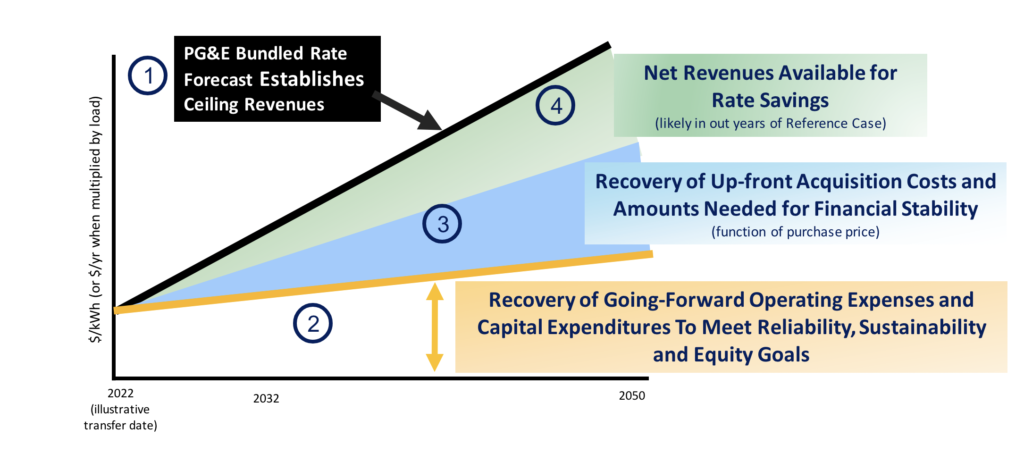San Francisco will move a step closer to fulfilling a century-old mandate to establish a public-power system Monday/24 when the city’s obscure but powerful Capital Planning Committee will hear a presentation on efforts to buy out Pacific Gas and Electric Company’s local distribution system.
The Capital Planning Committee discusses long-term proposals for city infrastructure, including future bond acts.
In the presentation, Barbara Hale, assistant general manager for power at the city’s Public Utilities Commission, will report that PG&E delays and obfuscation in public projects have cost the city $35 million since 2018.
At the same time, the city’s existing public-power system, which provides hydroelectricity to municipal activities, has saved the taxpayers $50 million in just the past year.

A feasibility study done by the SFPUC shows that buying out PG&E’s lines, poles, meters, and other infrastructure would bring down rates and bring far more cash into the city that it would cost to take over the system.
San Francisco’s Hetchy Hetchy power system generates 385 megawatts of hydro power, 9 megawatts of solar, and 3 megawatts of biogas power, all of it free of greenhouse gas emissions.
But it’s difficult, and sometimes almost impossible, to bring the power to city projects, including schools, public-health facilities, and affordable housing projects because PG&E owns the lines that carry that power. And the utility has been terrible about working with the city, making extraordinary demands and charging huge prices to deliver the city’s own power to local projects.
The only way the city can solve this is to buy the delivery system. It’s also the only way to promote distributed rooftop solar, which could play a huge role in the city’s climate-change efforts; PG&E has gone out of its way to block rooftop solar because distributed generation cuts into its private profits.
Help us save local journalism!
Every tax-deductible donation helps us grow to cover the issues that mean the most to our community. Become a 48 Hills Hero and support the only daily progressive news source in the Bay Area.
The SFPUC estimates that the value of the system at $2.4 to $3 billion. That sounds like a bit number, but it’s actually cheap: Since the city can issue revenue bonds to pay for the system (with no risk to the taxpayers), at (these days) about 4 percent interest, the annual payment would be around $45 million.
PG&E’s operating revenue from selling electricity last year was $17 billion, according to the company’s financial statements, which is about $3,090 a customer. Assuming about 500,000 residential and commercial customers in San Francisco, we’re talking $1.5 billion a year in revenue.
And since this city is so dense, operating costs are comparatively low. So the $45 million annual nut would be peanuts compared to what the city would gain.
From the SFPUC:
Public Power Expansion will enable the City to achieve independence from Pacific Gas & Electric Company, establish local accountability for electric ratepayers in San Francisco, and facilitate investment in infrastructure to further our decarbonization and grid resiliency efforts.
The agency is asking for just $13.9 million over the next two years to prepare for the takeover.
PG&E insists the system isn’t for sale, so the city will have to file an eminent domain action to seize it. The first step in that process: The California Public Utilities Commission is doing its own evaluation of the system, and next year is expected to tell the city what it’s worth.
At that point, with plenty of data, San Francisco can go into court.
This, of course, assumes that next year the mayor, the supes, and the city attorney will all still be on board with the plan. Among the companies that Mayor London Breed is going to ask for money for her Panda plan at the Zoo: PG&E. Can you imaging the company execs coughing up big money if she is still pushing public power? Is there a serious conflict here?
The meeting starts at 11am in Room 305 City Hall.




